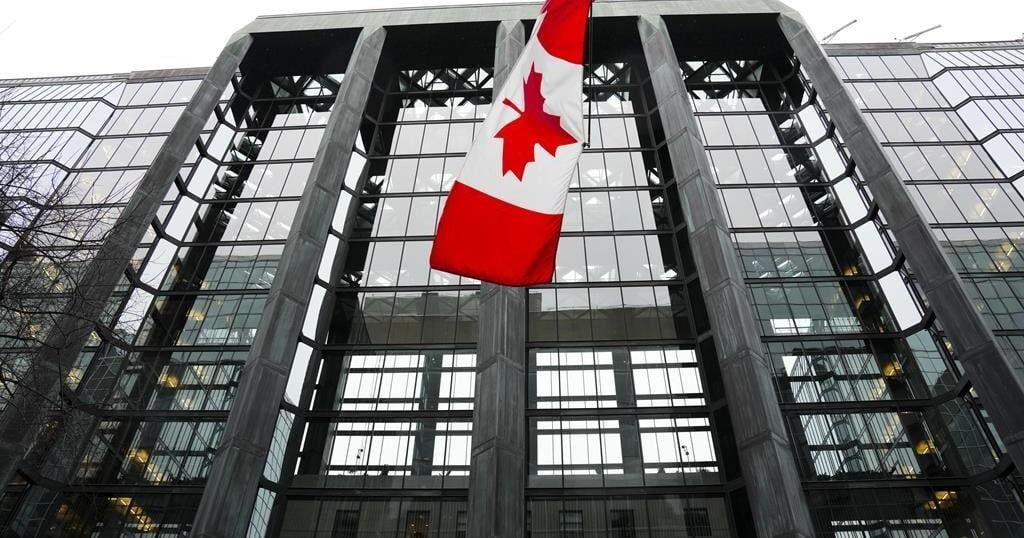Business groups say the work stoppage at B.C. ports is the latest in a run of supply chain disruptions affecting Canadian companies and the country’s economy.
Employers at most of the province’s ports locked out their workers Monday in a dispute involving roughly 700 unionized foremen. The workers represented by the International Longshore and Warehouse Union Local 514 have been without a contract since March 2023.
The disruption comes less than a year and a half after a 13-day strike by different workers at most B.C. port terminals and just a few months after a countrywide work stoppage at Canada’s two biggest railways.
The Canadian Chamber of Commerce said Monday that significant labour disruptions are becoming too common and tarnish Canada’s reputation as a reliable trading partner.
“Not long ago, shutting down our West Coast ports two years in a row would have seemed unthinkable,” said the Chamber’s senior director of transportation, infrastructure and construction Pascal Chan in a statement.
“The resulting damage to trade and our economy is another blow to Canadian workers and businesses.”
Greater Vancouver Board of Trade president Bridgitte Anderson said the shutdown will disrupt $800 million in goods every day, warning it could put upward pressure on inflation.
“The Port of Vancouver is far and away the most significant port that we have in Canada,” said Fraser Johnson, a professor of operations management at the Ivey Business School at the University of Western Ontario.
He said the port handles about 45 per cent of the total volume of Canada’s ports, with the next largest being Montreal at about 10 per cent.
“I think a lot of people tend to focus on what’s coming into the country in terms of consumer goods, automobiles, electronics, especially this time of the year, when we’re coming up to the holiday season,” said Johnson.
“But there’s a lot of stuff that gets exported out of Canada. So lumber, commodities like coal, for example, iron ore, all get shipped out of Canada via our West Coast ports.”
Johnson said the longer the port stoppage goes on, the harder businesses’ bottom lines and the economy will be hit.
If it goes on for several weeks, consumers could start to see more of an impact as well, he said.
The 2023 B.C. port strike cost manufacturers an average of $207,000 per day, Canadian Manufacturers and Exporters president and CEO Dennis Darby said in a statement Friday.
The Chamber’s Chan urged the government to “use every tool at its disposal to resolve this dispute.”
The federal government was relatively hands-off in last year’s port dispute, said Johnson — unlike the rail stoppage, which saw the government ask the Canada Industrial Relations Board to order a return to work and binding arbitration, which it did.
Despite the importance of Canada’s ports, Johnson said the rail disruption posed a more imminent threat.
“Railroads touch most of the products that people consume at some point in the supply chain, so they’re really the lifeblood of the Canadian economy,” he said.
“Shutting down a port for a couple of weeks probably isn’t going to be something that people are going to notice, but … a rail disruption would have much more significant economic impact and significant impact on consumers directly.”
On Friday, Fertilizer Canada also raised the alarm about the impending labour disruption, saying the ports are vital for exporting potash overseas and a shutdown would cost the industry $9.7 million per day in lost sales revenue.
The organization said the 2023 dispute cost the fertilizer industry more than $126 million, and had knock-on effects beyond the 13 days workers were off the job: in the months after the stoppage, Canada lost significant market share to Russia in key markets, it said.
“We are once again on the brink of losing access to a critical trade corridor, and potash fertilizer will be one of the hardest-hit commodities,” said president and CEO Karen Proud in a statement.
The organization called on the federal government to amend the Canada Labour Code to “ensure the continuous movement of fertilizer products at ports during labour disputes.”
Nutrien, the world’s largest potash producer, said that its marketing and delivery subsidiary Canpotex is exploring alternatives to mitigate the stoppage’s effect on customers.
However, a prolonged disruption could negatively affect farmers and food security globally, said media relations manager Shawn Churchill in an emailed statement.
On the other side of the country, the Port of Montreal is also in the midst of a dispute, with two terminals closed until further notice as about 1,200 longshore workers began striking at the end of October.
— With files from Chuck Chiang in Vancouver
This report by The Canadian Press was first published Nov. 5, 2024.
Note to readers: This is a corrected story. A previous version said the 2023 strike was at the same port.
